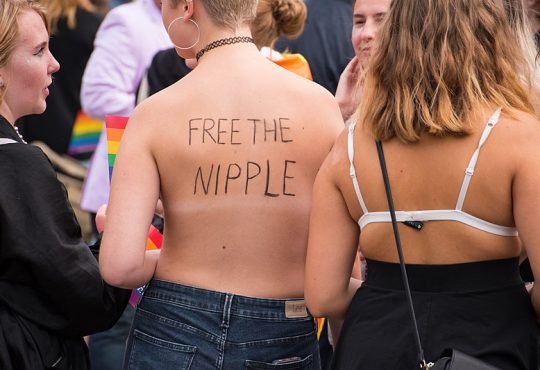Men dominate politics. Currently women make up only 18.5 percent of Congress. Similarly, women only hold 24.2 percent of state legislature positions, with 20 in the Senate. Clearly, it seems odd that women make up roughly half the population, but only one-fifth of our Senate. Oh, and we still have not had a woman be our Commander in Chief.
In the past century, our nation has made some progress. Today, it is no longer revolutionary when a woman runs for office. It is wonderful that we now have openly gay members of Congress. Yet, optimism regarding our progress quickly dwindles when considering where we should be. If the governing body is supposed to represent its constituents, than it would be expected that there would be a proportional representation of all gender and sexual orientations. This is, of course, how it looks on paper.
People have actually shown general interest in moving towards the lofty ideal of equality. In a recent Pew Research Poll, 71 percent of responders said they would not care if the next President was male or female, while 19 percent would be more likely to vote for a female candidate, and 9 percent would be less likely.
It seems reasonable that some would want to support a female candidate over a male candidate with similar credentials. This Affirmative Action-type argument makes sense for those looking to transform the uneven political landscape. The more enlightening number is the 71 percent that are indifferent to the candidates’ genders. Perhaps they still have subconscious biases, but it is nice to see people devaluing gender in their evaluation of a politician. It is not nearly as important as their political record, as well as countless other factors. Beyond the polls, two key Senate races currently feature women running. The contrast between their two platforms, as well as the reactions from the voters they are trying to win over, reveal an interesting aspect of the gender dynamic in politics.
Beginning with the traditional approach of Kay Hagan, we see a clean-cut campaign hailed as “near perfect” in an article by Alex Roarty of The Atlantic. Hagan is a democrat, faring much better than any of her fellow party members in what is proving to be a toxic political environment. Her approval rating among women is relatively high, at 49/37. The approach has been quite simple, with Hagan highlighting the normality of her own home life and political career. Her three kids are mentioned, as well as her staunch commitment to education. However, she says relatively little about her personal life, focusing more on policy and past work and, of course, endorsements from Hillary Clinton. This is only brought up because of its stark contrast to the techniques used by Jodi Ernst, a republican woman looking to win a tight race in Iowa.
Iowa is unique when it comes to women in politics. Mainly because it has never had a woman serve in congress, or as governor. With traditionally republican voters, Iowa seemed the perfect place for a woman to run, especially with conservative policies. Yet, the polls tell a different story. Bruce Bailey, the democratic representative, actually leads Ernst by 14 points among women voters. Also, Ernst leads Bailey, in an even larger margin, among men. This could easily be due to the platform Ernst is running with. She does not shy away from her military background, or “tough” side. The candidate even aired a commercial with Ernst riding a motorcycle and shooting a gun to “take aim at wasteful spending.” This is ridiculous. Not because she is a woman, but because of the great lengths it goes to in order to show an image, an image of Ernst inhabiting a masculine world. Maybe women voters do not like this, which could be a reason for the disparity in points among voters. It could also be the reason she has a lead among male voters. Regardless, the inclusion of such themes in a political campaign seem entirely out of place, and irrelevant.
It is a shame that those running need to tailor their campaigns and gender images in order to appeal to voters. This will remain important as long as voters respond to it, and this is where the problem lies.





